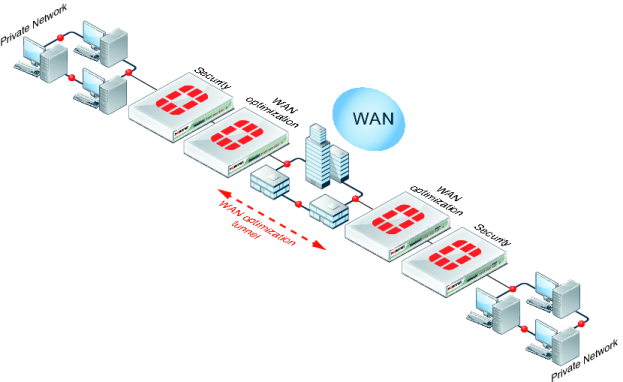Out-of-path topology
In an out-of-path topology, one or both of the FortiGate units configured for WAN optimization are not directly in the main data path. Instead, the out-of-path FortiGate unit is connected to a device on the data path, and the device is configured to redirect sessions to be optimized to the out-of-path FortiGate unit.
Figure 315 shows out-of-path FortiGate units configured for WAN optimization and connected directly to FortiGate units in the data path. The FortiGate units in the data path use a method such as policy routing to redirect traffic to be optimized to the out-of-path FortiGate units. The out-of-path FortiGate units establish a WAN optimization tunnel between each other and optimize the redirected traffic.
One of the benefits of out-of-path WAN optimization is that out-of-path FortiGate units only perform WAN optimization and do not have to process other traffic. An in-path FortiGate unit configured for WAN optimization also has to process other non-optimized traffic on the data path.
The out-of-path FortiGate units can operate in NAT/Route or Transparent mode.
Other out-of-path topologies are also possible. For example, you can install the out-of-path FortiGate units on the private networks instead of on the WAN. Also, the out-of-path FortiGate units can have one connection to the network instead of two. In a one-arm configuration such as this, security policies and routing have to be configured to send the WAN optimization tunnel out the same interface as the one that received the traffic.



